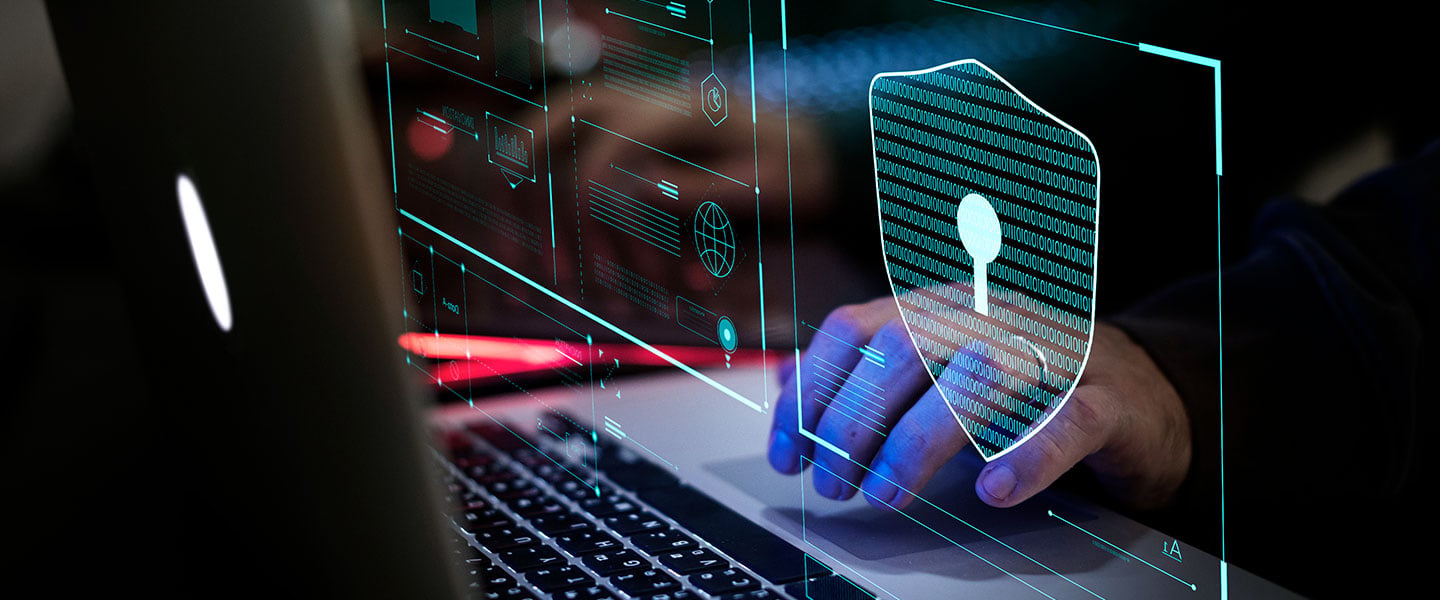-
Business Consulting
Our business consulting specialists offer a comprehensive blend of strategic advisory services. We assess the business, industry, operating model, synergy, skill sets and vision of the organisation and recommend the way forward
-
Digital Natives
Unlock growth with Grant Thornton Bharat's Digital Natives solutions. Customised support for tech-driven companies in healthcare, gaming, and more.
-
Digital Transformation Services
Grant Thornton’s digital transformation services help traditional businesses digitalise their business models with cloud technology, IoT consulting, app development and more DigiTech solutions.
-
Finance Transformation
Using a holistic approach, integrating digitalisation and digital transformation we help clients achieve transparency, control, governance, and faster decision making through real-time data within the business.
-
Human Capital Consulting
Our Human Capital Consulting team harnesses technology and industry expertise to assist in constructing adaptable organisations with transparency, fostering productive and value-driven workforces, and inspiring employees to engage meaningfully in their tasks.
-
Production Linked Incentive Scheme
Production-linked Incentive Scheme by the Indian government is aimed at boosting manufacturing. Grant Thornton Bharat offers varied services across sectors to help businesses avail of this scheme.
-
Public Sector Advisory
Our Public Sector Advisory team has focused streams, aligned with the core priorities of the Government of India. We are responsible for providing innovative and customized technical and managerial solutions.
-
Tech Advisory
We have amalgamated Digital Transformation, IT Advisory & Information Management and Analytics into a new offering, DigiTech.

-
Direct Tax services
Our tax specialists offer a comprehensive blend of tax services, tax litigation, regulatory and compliance services, helping you navigate through complex business matters.
-
Indirect Tax Services
Get tax services by leading tax firm Grant Thornton India. Our indirect tax services include consulting, compliance and litigation services for corporate, international and transaction tax
-
Transfer pricing services
Our transfer pricing services experts provide a range of services from provision of APA services to handling large global assignments including Country by Country reporting.
-
US Tax
At Grant Thornton, we help individuals and dynamic companies deal with US tax laws, which are one of the most complicated tax legislations across the world.
-
Financial Services - Tax
Best financial advisory services, tailored for small and large businesses by the experts having comprehensive knowledge of domestic laws and access to multifaceted tools to provide a valuable results.
-
Financial Reporting consulting services
Our experts have significant hands-on experience in providing IFRS/US GAAP services, end-to-end solutions and support services to fulfil financial reporting requirements.
-
Fund accounting and financial reporting
International operations often lack standardisation and have varied local reporting formats and requirements. Our experts can offer proactive insights, practical guidance, and positive progress and help meet regulatory timeframes.
-
Compliance and Secretarial Services
Our experts can assist in overhauling the entire compliance machinery of the organisation through evaluation of the applicable statutory obligations, monitoring of adequate governance controls, reporting and providing ongoing support.
-
Global People Solutions
As businesses transcend borders, both domestic and global considerations need equal attention. Our interim CFO and financial controller support services help organisations meet the business vision.
-
Finance and accounting outsourcing
Our accounting experts assist organisations in managing their accounting and reporting. Our dedicated Integrated Knowledge and Capability Centre (IKCC), allows us to service both the domestic and global markets efficiently and cost-effectively
-
Compliance Management System
We have automation solutions for you that will allow meeting government requirements and remain diligent, which when failed, can lead to penalties and loss in revenue.
-
Global compliance and reporting solutions
At Grant Thornton Bharat, we meet the challenges of our clients and help them unlock their potential for growth. Our professionals offer solutions tailored to meet our clients’ global accounting and statutory reporting requirements. With first-hand experience of local reporting requirements in more than 145+ locations worldwide, we provide seamless and consistent international service delivery through a single point of contact.
-
Related-party transaction governance
Related-party transactions (RPTs) are common in business structures where organisations engage with their group entities, such as holding companies, subsidiaries, associate concerns, joint ventures, or key management personnel, for various operational or financial purposes.
-
Family Offices & Private Client Services
Grant Thornton Bharat Private Client Services offers tailored advisory for family-owned businesses, focusing on governance, compliance, tax, succession planning, and family office structuring to sustain wealth and preserve legacies across generations.
-
GTMitra: Tax & Regulatory Tool
GTMitra, a specialised tax and regulatory tool by Grant Thornton Bharat, supports multinational businesses in understanding laws and regulations for effective growth strategies.
-
Labour codes
Labour codes solutions help you transition through the new legislation. At Grant Thornton, we help businesses divide their approach to make sure a smooth transition.
-
Alerts
At Grant Thornton India, with the help of our tax alerts, we help to provide updates on how to minimise your tax exposure and risks.
-
Unlocking opportunities: India investment roadmap
The India Investment Roadmap resource is designed to navigate the complexities of Indian tax and regulatory laws, providing seamless guidance and a comprehensive set of solutions to ensure a smooth process for investors aiming to establish or expand their presence in India.
-
CFO Solutions
Our comprehensive suite of solutions for CFOs

-
Cyber
In today’s time, businesses have gone through large transformation initiatives such as adoption of digital technologies, transition to cloud, use of advanced technologies et al.
-
Risk Optimisation
Our Governance, Risk and Operations (GRO) services encompass Internal Audit, Enterprise Risk Management, Internal Financial Controls, IT advisory, Standard Operating Procedures and other services.
-
Risk analytics
Grant Thornton Bharat’s CLEARR Insights is a state-of-the art data analytics platform that will help you in seamless data analysis and efficient decision-making.
-
Forensic & Investigation Services
The team of forensic advisory services experts consists of the best intelligence corporate experts, and fraud risk, computer forensic experts to deliver most effective solutions to dynamic Indian businesses.
-
Digital Forensics and Incident Response (DFIR)
Strengthen cyber resilience with proactive forensic audits
-
ESG consulting
Grant Thornton Bharat offers holistic ESG consulting solutions for sustainable business outcomes. With industry expertise and AI technology, we drive long-term value.

-
Transaction Tax Services
Our transaction tax experts understand your business, anticipate your needs and come up with robust tax solutions that help you achieve business objectives ensuring compliance and efficiency
-
Deal Advisory
Unlike other M&A advisory firm in India, we offer deal advisory services and work exclusively with controlled and well-designed strategies to help businesses grow, expand and create value.
-
Due Diligence
Grant Thornton’s financial due diligence services are aimed at corporate looking for mergers and acquisitions, private equity firms evaluating investments and businesses/promoters considering sale/divestment.
-
Valuations
As one of the leading valuation consultants in India, Grant Thornton specializes in all the aspects of the process like business valuation services, financial reporting, tax issues, etc.
-
Overseas Listing
Overseas listing presents a perfect platform for mid-sized Indian companies with global ambitions. Grant Thornton’s team of experts in listings, work closely with clients during all stages.
-
Debt & Special Situations Solutions
Grant Thornton Bharat offers specialist debt and special situations consulting services, including restructuring, insolvency, and asset tracing solutions.
-
Financial Reporting Advisory Services
Grant Thornton Bharat Financial Reporting Advisory Services offer end-to-end solutions for complex financial requirements, including GAAP conversions, IPO support, and hedge accounting advisory, ensuring accurate financial reporting and compliance.
-
Financial Statement Audit and Attestation Services
Grant Thornton Bharat offers customised financial statement audit and attestation services, ensuring impeccable quality and compliance with global standards. Our partner-led approach, technical expertise, and market credibility ensure effective solutions for your business needs.

- Agriculture
- Asset management
- Automotive and EV
- Banking
- Education and ed-tech
- Energy & Renewables
- Engineering & industrial products
- Fintech
- FMCG & consumer goods
- Food processing
- Gaming
- Healthcare
- Urban infrastructure
- Insurance
- Media
- Medical devices
- Metals & Mining
- NBFC
- Pharma, bio tech & life sciences
- Real estate and REITs
- Retail & E-commerce
- Specialty chemicals
- Sports
- Technology
- Telecom
- Tourism & hospitality
-
 Thought leadership Co-lending in India: Expanding credit access for MSMEsIn today’s rapidly evolving financial landscape, co-lending has emerged as a key enabler of credit expansion in India, facilitating partnerships between banks and non-banking financial companies (NBFCs) to extend credit more efficiently to underserved segments.
Thought leadership Co-lending in India: Expanding credit access for MSMEsIn today’s rapidly evolving financial landscape, co-lending has emerged as a key enabler of credit expansion in India, facilitating partnerships between banks and non-banking financial companies (NBFCs) to extend credit more efficiently to underserved segments. -
 Article Why India’s financial inclusion journey needs to focus on equity and access to creditFinancial services have expanded over a decade, giving millions access to bank accounts and digital payments. But true empowerment needs to reach every corner of the country if growth is to be long-term and sustained
Article Why India’s financial inclusion journey needs to focus on equity and access to creditFinancial services have expanded over a decade, giving millions access to bank accounts and digital payments. But true empowerment needs to reach every corner of the country if growth is to be long-term and sustained -
 Thought Leadership Competitive and sustainable agriculture & food processing in KeralaThe economy of Kerala is primarily driven by the services sector, which contributes 66% to the Gross State Domestic Product (GSDP).
Thought Leadership Competitive and sustainable agriculture & food processing in KeralaThe economy of Kerala is primarily driven by the services sector, which contributes 66% to the Gross State Domestic Product (GSDP). -
 Article Economic Survey 2024-25: Deregulation, investment and innovation for a Viksit BharatIndia's economic growth remains for a steady trajectory with real GDP expected to grow at 6.4% in FY25 and in the range of 6.3%-6.8% in FY26, reflecting resilience despite global uncertainties.
Article Economic Survey 2024-25: Deregulation, investment and innovation for a Viksit BharatIndia's economic growth remains for a steady trajectory with real GDP expected to grow at 6.4% in FY25 and in the range of 6.3%-6.8% in FY26, reflecting resilience despite global uncertainties.
-
Quarterly Aviation Insights
Explore the latest trends in aviation industry with Grant Thornton Bharat’s Quarterly Aviation Insights. Stay updated on industry growth, market shifts & key developments.

-
Freight Forward: Quarterly insights
Logistics sector in India is adapting to rising costs, global disruptions, and the growing urgency of sustainability.
-
India-UK
India-UK

Considering the cyber-attacks on the Indian power sector over the past few years, it is evident that the function of cybersecurity has gained focus amongst the power sector organisations, across the value chain. While one cannot deny the readiness of the power sector ecosystem and the nation, in terms of dealing with such cyber-attacks, one cannot also ignore the facts these were only initial attacks, and that our systems are far more complex for a newbie-to-the-the-Indian-context cyber-criminal to breach. Moreover, taking cognisance of the trend of the ever-escalating creativity in the manner in which these attacks are conducted, it is imperative that we ought to consider improving our ‘established’, ‘strong’ defences.
Apart from the damaging effects that a cyber-attack would have on the public life and economic activities of the nation, it would be pertinent to note that the Government of India had enshrined the essence of electricity in all dimensions of the life of the people of the nation by recognising it as a ‘basic human need’ in its National Electricity Policy, 2005. With this as the basis of our analysis, it could be deduced that a cyber-attack on the critical infrastructure deployed for the generation and supply of electricity should be construed as an attack on the rights and privileges conferred by the Constitution of India on the citizens of India for ensuring their individual and overall national development. Further, such an attack could also be interpreted as a violation of the right to an adequate standard of living under the International Covenant on Economic, Social and Cultural Rights treaty of the United Nations; which was ratified by the Republic of India on Apr 10, 1979. Now, what makes this analysis furthermore interesting is that various sources confirm that around 85% of consumers, across categories, are connected to the electricity grid today. So, a cyber-attack on the power sector could be construed as a violation of the rights and privileges of an entire people of a nation.
So, cyber-securing power sector organisations across the value chain is not only vital from the perspective of ensuring continued, peaceful conduct of public life and persistent progress of economic activities within the nation, but also fundamentally from the standpoint of safeguarding the rights and interests of the people of India. Moreover, since it is well-established knowledge within the academia-government-industry ecosystem, that cyber-attacks on National Critical Infrastructure are becoming relentlessly more complex and crippling, the matter attains a prominent degree of urgency. The only window available with our power sector companies to better their cyber-defences is from now until the point-in-time where cyber-criminals have obtained a sufficient understanding of our Information Technology (IT), Operational Technology (OT) and Internet of Things (IoT) systems.
Hence, it's important to rigorously work towards making the digital systems of our power sector organisations vulnerability-free. An approach leveraging the learning process, in the form of the ‘Distract-Learn-Secure Strategy’ (DLSS) is recommended to be explored for employment. The Distract-Learn-Secure Strategy is envisaged to comprise of two components - first, an element of distraction within the existing digital ecosystem of our power sector organisations for slowing the cyber-criminals in their process and second, an additional line of defence for enabling our learning of the behaviours and traits of the cyber-criminals assailing our power sector’s digital systems. As an outcome of its implementation, the DLSS is intended to create two additional lines of cyber-defence over and above our existing installations of cybersecurity.
The digital systems of our power sector organisations are inherently characterized by enormous intricacies on account of the roadmap of their development over time. The 'Distract' element of the DLSS aims to utilise this intrinsic feature of the digital systems of our power sector companies and enhance it with prudent installations of honeypots for misrepresenting the digital ecosystem to the cyber-criminals. This approach is expected to lead to a larger number of failed attacks, which in turn, is contemplated to yield two advantages– first, it will provide us with additional opportunities of learning about the behaviour of the cyber-criminals through their failed cyber-attacks on our systems, and second, it will prolong the duration of time-to-a-successful-attack, allowing us to further strengthen our cyber-defences.
In comparison to the ‘Distract’ element, the 'Learn' element of the DLSS is anticipated to be a vigorously active pursuit. It will entail in setting up of a dedicated Cybersecurity Governance Office, under the IT function of a power sector organisation, that will ensure patient, systematic and meticulous institution and execution of Standard Operating Procedures (SOPs) pertaining to the learning actions, for building the additional line of ‘Learned Defence’. In addition, this operation is also prognosticated to result in the creation of a comprehensive, robust knowledgebase for not only planning upgrades to the existing lines of defence within an organisation but also providing a possibility of building a sector-wide, national-level ‘collective defence’ through collaboration between power sector organisations and government.
So, in a nutshell, the DLSS is all about efficaciously employing the science and art of learning to launch our very own enterprise of reconnaissance; which was otherwise only engaged by cyber-criminals. Prima facia, commissioning of DLSS may seem extraordinarily tedious, and even unnecessarily costly and futile. However, considering the safeguard it shall offer to the operations of our power sector ecosystem, and its concomitant impact on the public life and economic activities of the nation, the effort and expenditure only seem justifiable.


